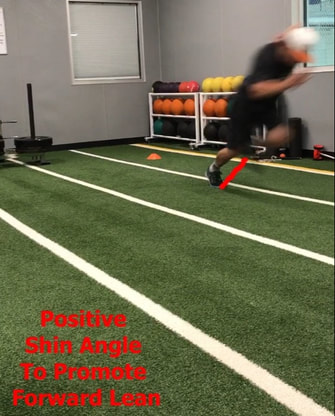|
As I become more involved with strength and speed training with baseball players it is increasingly obvious that the 60-yard dash is a bad metric to use to test “true baseball speed.” I put true baseball speed in quotes because once we step back and evaluate the sport we will realize the unique aspects of the sport that define what good speed truly is. That’s the thing here. Each sport has different components that help us find ways to effectively train speed in the most efficient manner possible. So, in order to attack this topic effectively I will first break down the two phases of a sprint (acceleration and top speed), the nature of the 60-yard dash, sports specific speed to baseball (that is, what actually happens in a game) and lastly my suggestion for a better test for linear baseball speed.
The Two Phases of A Sprint Let’s cut to the chase here. Essentially, a linear sprint is made up of two phases.
The Nature of The 60-Yard Dash Now that we understand the phases of the sprint we can begin to discuss what is present during the 60-yard dash. Essentially, only twenty-five percent of the 60-yard dash is spent on acceleration (15 out of 60 yards). This means that 75% (45 of 60 yards) is spent in the top speed phase. Keep this in mind as we move forward. Baseball Sport Specific Speed This is the part of the article where I dissect the involvement of linear speed in the game of baseball. For ease of understanding here I will break this down in three phases: home to first after contact, base running and lastly defensively (particularly in outfielders).
My Suggestion For A New Test For Baseball Speed As you can guess, my suggestion for the test of linear baseball speed would be the 20-yard dash. In my opinion the 20-yard is more effective due to the fact that more of baseball is spent in acceleration than top speed. Gauging a baseball player’s speed with a test that is mostly spent in top speed when they mostly play the sport in acceleration is inaccurate.
1 Comment
7/31/2023 07:24:23 pm
I found this post "WHY THE 60-YARD DASH IS A POOR WAY TO TEST BASEBALL SPEED" to be incredibly informative and well-researched. The author's attention to detail and inclusion of relevant examples truly enhances the content and makes it engaging to read.
Reply
Leave a Reply. |
AuthorSGerry DeFilippo: ISSA CPT- CPPS, AAPS. Founder/Owner: Challenger Strength. Archives
October 2020
Categories
All
|


 RSS Feed
RSS Feed